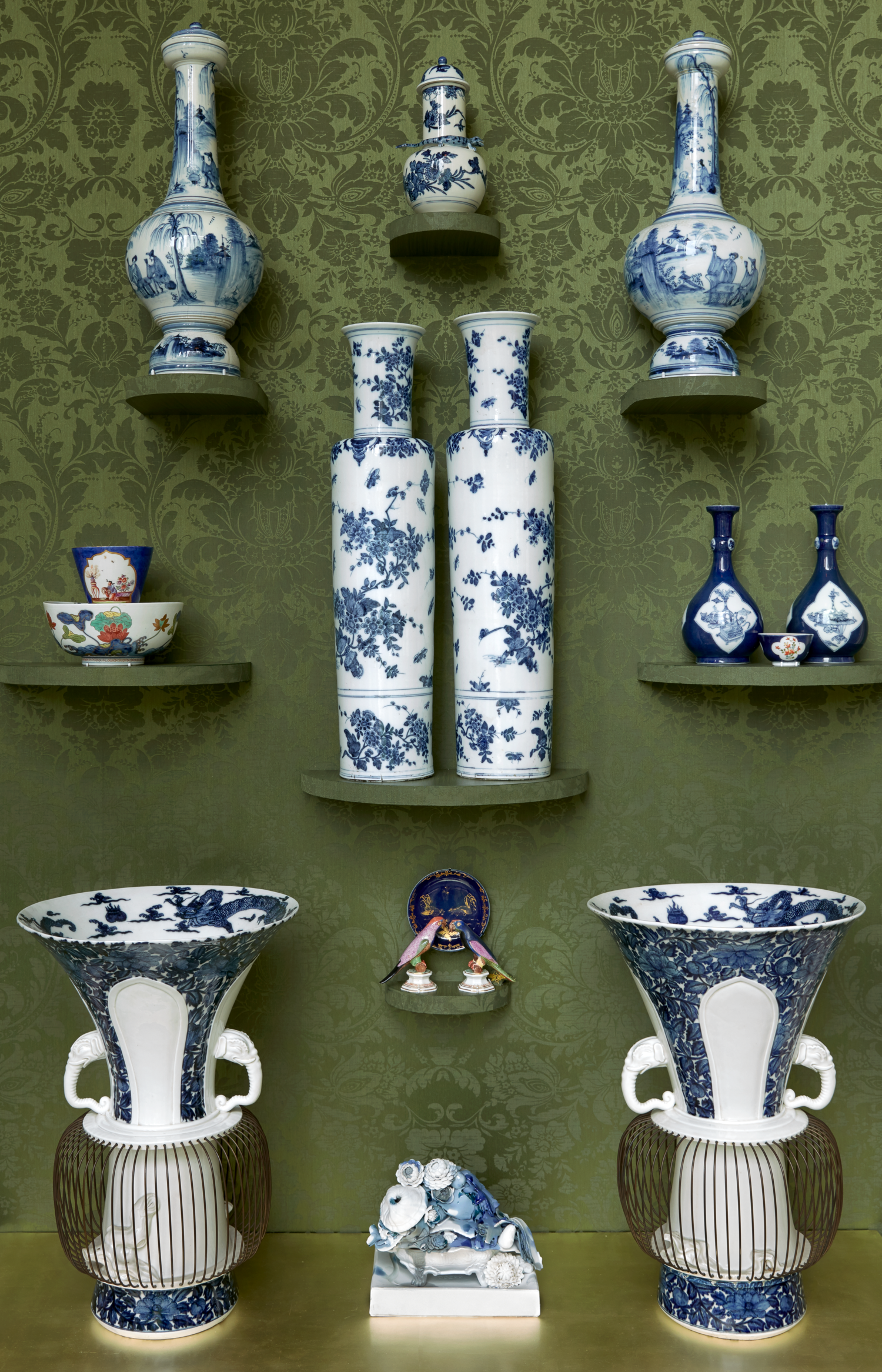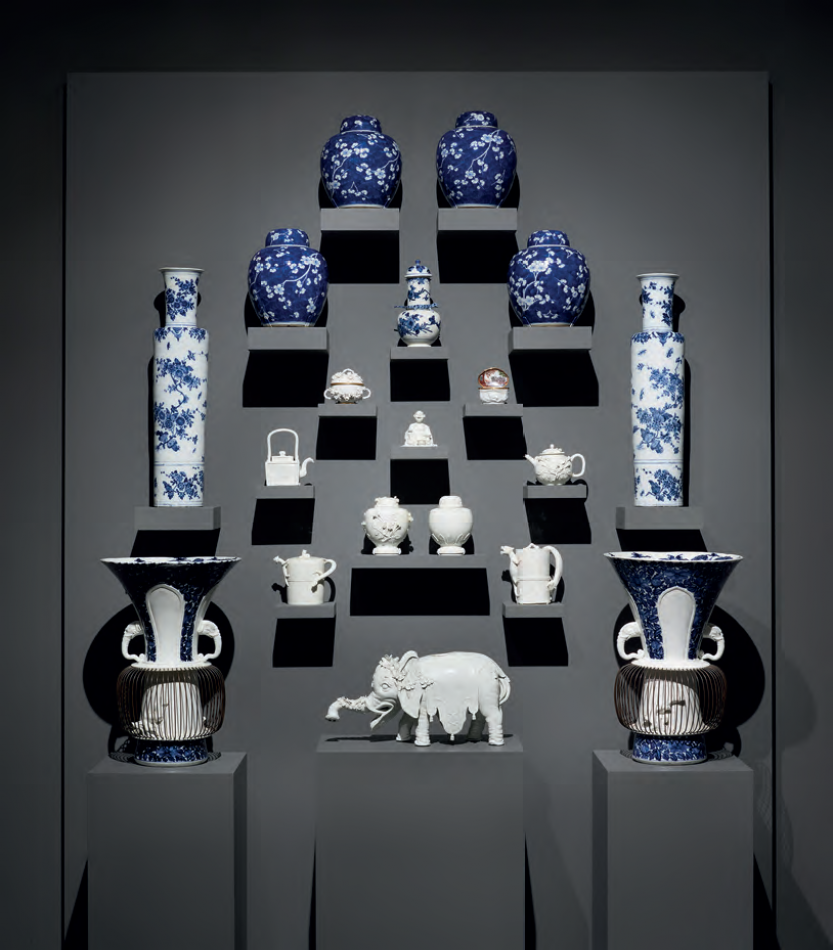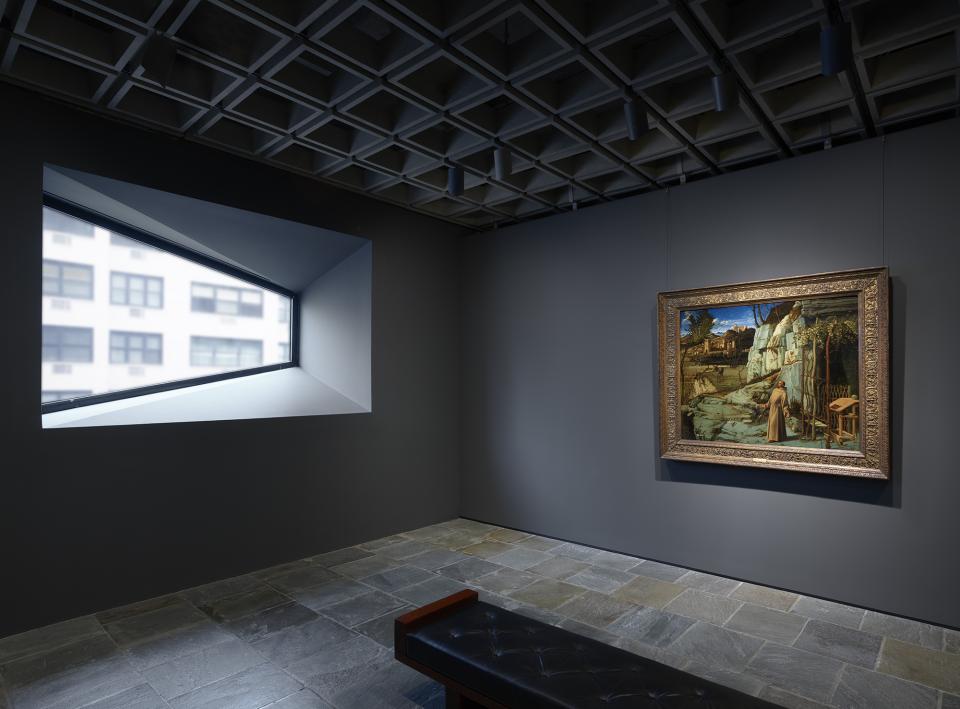The Mansion versus the Museum
A review of the Frick Madison
Bailey Tichenor
April 6, 2022
Built in 1966, Marcel Breuer’s Madison Avenue Brutalist monolith, which originally housed the Whitney Museum of American Art and then a selection of the Metropolitan Museum of Art’s modern and contemporary collection, is now a temporary home to works from the Frick Collection. The Gilded Age mansion closed in 2020 for renovations, and in the meantime selected works from the collection will be on display in the Breuer building, now dubbed Frick Madison. Though its current exhibition is quite a departure from previous displays of 20th- and 21st-century works, the Breuer building brings an interesting juxtaposition between a space and its contents and provides visitors an opportunity to rethink works in a new context.
The Frick Madison is perhaps most impactful for those who have previously visited the 70th Street mansion. Upon entering the Breuer galleries, one immediately notices Breuer’s sparse interiors compared to Thomas Hastings’s aristocratic European designs. Here, the focus is on individual works of art, compared to the previous installation which emphasized the amalgamation of art and its interplay with rich interiors. The palpable change in surroundings allows us to think about the importance of context when it comes to the display of art.

Frick Collection, New York; Galerie Magazine.
In the mansion installation, fine and decorative arts worked together to convey the splendor, importance, and wealth of the collector and homeowner, Henry Clay Frick. A traditional method of artistic display since the Renaissance, displays of abundance were common in the Gilded Age to bring cultural and social legitimacy to nouveau riche households. Artworks could be installed according to aesthetic properties for decorative purposes as well as with an eye towards subject matter and historical meaning, functioning to say something about their owner. Old Master portraits of rulers and scholars, for example, would have reflected on Frick’s own character.
In the museum installation, pieces are organized thematically and by medium, (a rather traditional display method in the history of public museums) in order to show the encyclopedic depth and significance of the collection. The three Vermeers are displayed together, for example; the Spanish Masters are also grouped, as are the Sevres porcelains, Renaissance portraits, French Impressionists, etc. While some might view this curation as a rather safe or even easy choice, it is important to realize that this display method is a departure from the original presentation in the Frick mansion and encourages visitors to think about these works in a different way.
Even still, the survey-style display conveys the prestige and virtuosity of Henry Frick’s amassed collection of many, many incredibly important works of art. Three Vermeers certainly expresses both quantity and quality, especially when only “thirty-four paintings are now widely attributed to Johannes Vermeer,” as the Frick’s accompanying exhibition guidebook states. The socio-political goal of Frick’s collection is maintained; clearly the result is a legacy that speaks for itself no matter the context.
Breuer’s architecture seems to provide interaction with the works of art beyond its role as a new context for the collection. The finest example of this belongs to what is arguably the finest work in the collection: Bellini’s Saint Francis, which is displayed brilliantly. The painting is sequestered in its own room on the third floor, where the sun filters through the trapezoidal window to meet Saint Francis’s eyeline just as he is receiving the heavenly light. The installation is so seamless that viewers might be surprised to learn that Breuer did not in fact design this room for the Bellini painting. Another room on the fourth floor, containing Fragonard’s Progress of Love, also features a similar installation technique with Breuer’s window projecting natural light onto the Rococo scenes: the interplay between art and architecture is obviously coincidence yet seems a lot like kismet.
Of particular interest to Artistoric, of course, was the Collection’s display of a selection of decorative arts. Divorced from the lavish Gilded Age interiors, these pieces had to be reinterpreted in a fine arts setting which is, from a design stance, their antithesis. Unfortunately, the installation of European and Chinese porcelains was uninspired. While beautifully displayed, it was not a far departure from the Frick’s original installation.

Installation in the Frick Mansion (2016)
Frick Collection, New York; Arlene Shechet.

Installation at Frick Madison (2021)
Frick Collection, New York; The Burlington Magazine.
There was an opportunity to present these pieces in a completely different way in this new location. In a minimalistic, fine arts gallery setting, why not display these objects as works of art? The bronzes, on the other hand, had a more successfully unique arrangement, especially in a medium that often goes unnoticed by the latest generation of both museum visitors and art historians.

Frick Collection, New York; Bloomberg.
The Frick Madison can provide a model for future gallery/house museum partnerships. House museums, which are understandably restricted in display methods, might rethink temporary exhibitions to bring new crowds through their doors. Art galleries can introduce decorative arts and historical design in a context that previously celebrated minimalism. Collaboration, not separation, is the way of the 21st century. The result will surely lead to new conversations, interpretations, and scholarship.
Obviously a lot of elements came together to make Frick Madison possible that are just not present for the majority of house museums. However, as we see new technologies emerge there are possibilities that the ethos of this exhibit could be replicated (see, for example, Cinello’s Digital Artworks for possible technological solutions). Imagine the future collaborations between fine arts galleries and house museums in which artworks can be interchanged to present new connections and interpretations, where even the exhibition itself can be a work of art. The Frick Madison presents a future where installations do not have to be stagnant, while at the same time reminding us about the importance of context when viewing works of art.
For more information about the Frick Collection and Frick Madison, please visit frick.org.



